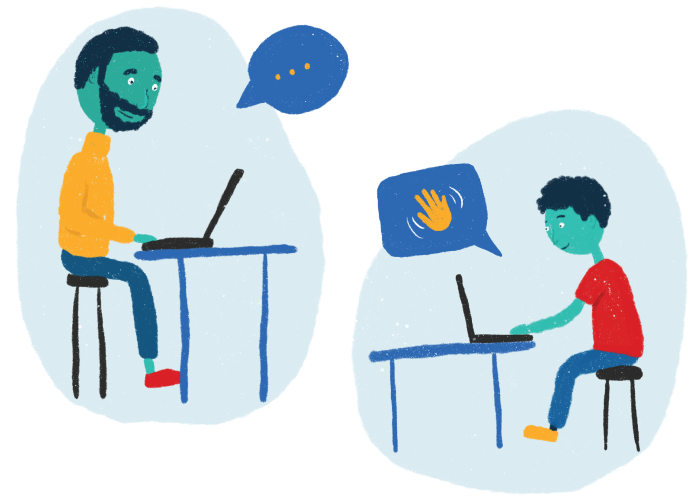
Courtesy of MENTOR
.
Social distancing has disrupted social services of all kinds, but nowhere are the changes felt more strongly than in youth organizations that offer one-on-one mentoring.
“Rule No. 1 in mentoring is: Do not abruptly break the relationship,” said Kate Schrauth, executive director of iCouldBe, a nonprofit that offers virtual mentoring.
But how does an organization quickly shift its mentoring relationships online in ways that are safe, monitored and affordable?
A mid-March survey by MENTOR: The National Mentoring Partnership found that 86% of mentoring organizations in its network faced barriers to moving the relationships online.
Since then, Schrauth has worked with MENTOR to essentially pull a rabbit out of a hat. In the space of six weeks they’ve rolled out a free virtual mentoring portal for youth-serving organizations.
Last week, the platform began to operate for 28 youth organizations with a total of 1,300 mentor-mentee pairs, Schrauth said. The organizations range from affiliates of Big Brothers Big Sisters of America to the Florida-based Take Stock in Children to small nonprofits with as few as five mentor-mentee pairs, she said.
“People are getting onboarded,” said Erin Souza-Rezendes, director of communications at MENTOR.
Organizations that would like to explore using the portal should go to go to https://www.mentoring.org/virtual-mentoring-portals and fill out a form indicating their interest, Souza-Rezendes said. The portal is for organizations offering one-on-one mentoring. Youth and mentors must have internet access.
iCouldBe has built a portal for youth ages 13 and older. MENTOR is also partnering with CricketTogether to create a portal for kids 12 and younger.
MENTOR did a survey in mid-March asking about the needs of organizations that offer mentoring. “We saw tremendous interest,” Souza-Rezendes said.
Last week iCouldBe was in the midst of training staff of various organizations to use the portal. It also launched its online chat function. Schrauth said funding for the initial 28 organizations to use the portal through June was being finalized.
Structured communication
The portal for youth 13 and older offers both structured and unstructured communication, she said. Mentors and mentees explore topic areas, such as succeeding in school, developing a career vision, getting work experience, preparing for the future, and practicing networking.
“We need to create a context for them to develop a relationship and for it to flourish,” Schrauth said.
In each area they explore, the young person identifies an opportunity or a challenge and then brainstorms solutions with the adult. As part of the process, the young person gets practice in asking adults questions.
“They practice networking,” Schrauth said.
One-on-one mentoring can help young people build the skills to find many more mentors, she believes.
“We’re really interested in the social capital development,” she said.
Out of 250 organizations surveyed by MENTOR, 93% wanted the full curriculum, she said.
In addition to its structured component, the mentoring portal departs from some in-person mentoring in another way. For safety’s sake, there’s a distinct lack of personal identifying information. Participants do not provide their last names, for example, and they may not share photos.
The portal also has data collection on the back end that allows for evaluation of how the mentoring relationship is working and of outcomes for the young person.
Another 27 organizations are in the pipeline to use the portal and more than 150 are looking to see whether the portal is a good fit for them, Schrauth said.





























